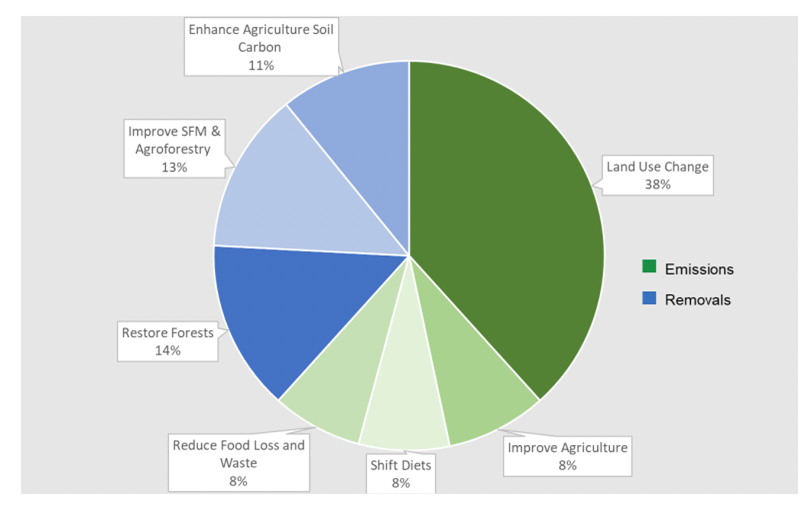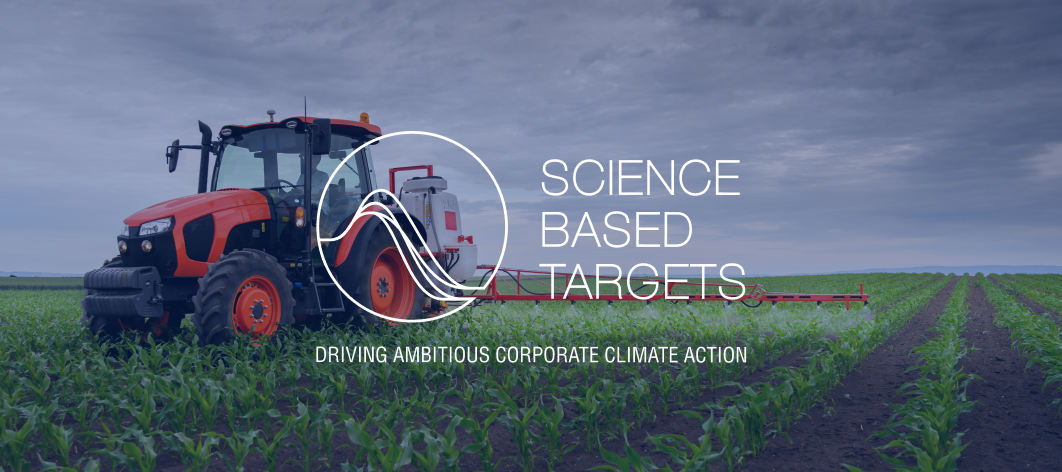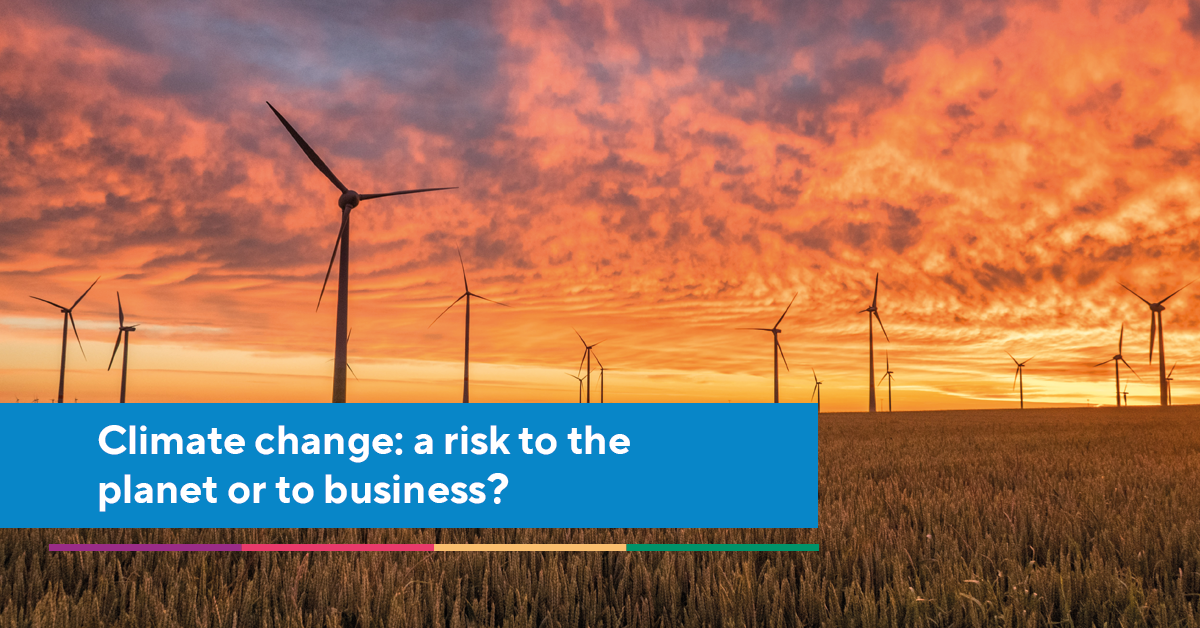This September, the first method to tackle land-based emissions was released by the Science Based Target Initiative (SBTi). These emissions happen during land management. This includes when applying fertilisers, using farm machinery, and when the use of the land changes such as when forests are cut down to make way for crops or animals. The Forest, Land and Agriculture (FLAG) Science Based Target Setting Guidance helps companies who use a significant amount of natural land-based resources to accurately target the reduction and removal of emissions. If your business is involved in agriculture, forestry and other uses of land, the guidance will help you work out how to limit your impact on and restore natural resources.
Why is the land connection important?
Globally, the use of land accounts for around 22% of greenhouse gas (GHG) emissions. This same land (and its resources) are also highly vulnerable to the impacts of climate change. This means that sectors using FLAG who are reliant on its resources are therefore exposed to a significant amount of climate risk.
In August, record-breaking temperatures hit Europe and severe drought struck China. In October, a tornado took the north of France by surprise. Climate change is making the weather hotter, wetter, and windier – and more often. And that makes it more difficult to grow crops to supply necessities such as food, clothing, and medicine.
As well as cutting emissions, protecting and restoring nature is crucial. It requires stopping any activity that destroys nature such as cutting down forests and converting coastal wetlands. Simply by existing, forests and mangroves have huge potential to remove emissions. 
Ways to remove and reduce emissions using land-based solutions
Click here for source.
With COP27 now over, it was expected that politicians will commit to stronger climate change targets, yet some countries tried to go back on their promises. Current net zero targets are not on track to meet the Paris Agreement and that means deeper and faster emissions cuts are needed. We have a small window to stop rapid climate change, but emissions will need to drop in half by 2030 - to achieve net zero by 2050 and limit global warming to 1.5C°.
While we know we must act quickly, many of us struggle with knowing what to do and what information can be relied on. We know that brands and retailers’ emissions are overwhelmingly in their supply chains under Scope 3 emissions. Whilst many have set Scope 1 and 2 targets, few account for Scope 3 reductions or removals. This is especially the case for companies using significant land-based resources. The lack of standards has held companies back, but the FLAG guidance aims to address this gap. Because the guidance is based on rigorous scientific analysis, there is every reason to move ahead.
When should companies use the FLAG guidance?
Companies with land-intensive activities who are setting science-based targets must set separate FLAG targets for activities in their value chains from specific sectors – whether it is forest and paper products, food production, or processing and retailing.
Companies in any other SBTi sector such as textiles and household product manufacturers, or construction, must have a target if they have:
- more than 20% of revenues from forests, land, or agriculture OR
- FLAG emissions that total more than 20% of overall emissions across scope 1,2,3 OR
- if Scope 3 is >40% of total emissions
For food and drink companies, WRAP’s Scope 3 GHG emissions protocol is a useful complement to the FLAG guidance. The protocol also has useful supplier questionnaires.
Who’s doing it?
The guidance is still fresh. However, it is expected that the 410 companies with intensive land use who have committed to (or set) SBTi targets will be testing it out in the coming months.
Even if your company is not in the SBTi, you can use the FLAG guidance to set a target – but you cannot market this as being verified by SBTi. If you are a supplier to companies with SBTi targets you will start to receive enquiries about it. Therefore, reading the guidance will give you have a taster of what to expect.
Are there any limitations?
The use of indirect actions such as securing land rights to reduce or remove emissions is not included. This matters because in areas where farmers do not have land rights, they are less likely to invest in improving land. In this case, an approach which includes collaboration on the ground with NGOs and local leaders is needed.
As with much climate action material, the guidance can be overwhelming. Undoubtedly there will be additional SBTi learning resources developed. There are external advisors who can help businesses to calculate their emissions and recommend the requisite supply chain actions.
Engaging with suppliers will be a challenge and a solution such as Supply Pilot’s collaboration software can help to communicate with suppliers and win them as allies to reach emissions targets.
What will businesses gain from using FLAG guidance?
Because the FLAG methodology is grounded in science, your business can set meaningful emissions targets. The analysis will indicate where efficiencies can be made, such as reducing packaging or fertilizer. This will help to partly mitigate the costs from raw material and gas price hikes.. Beyond savings, climate action can be profitable; as you investigate ways to be more efficient, you will find areas to innovate and add value.
Remember that the actions are not only good for the climate; they are essential when you rely on natural resources which are vulnerable to climate change. Investors are pushing for these risks to be accounted for, so when you can prove that you have taken action to manage these risks properly, investor confidence (naturally) will increase.
Regulation on climate action and reporting is evolving and is aligning with international reporting standards bodies on Scope 3 emissions. New standards of reporting will be phased in, starting as early as 2025 using data from 2024. The investment community supports this movement as it will become easier to benchmark companies’ performance.
There has never been more incentive to get ahead of the requirements and thus be seen as a competitive market leader and attract investment.
Finally, your brand communications will be credible when you show that your actions are grounded in science. This is a deciding factor for a new generation of employees, and increasingly, customers are willing to pay more for sustainable products.
I hope the reasons for taking science-based climate action in forest, land and agriculture activities are clear. We must act quickly to cut emissions in half by 2030 and bringing your FLAG suppliers along with you will be critical to delivering the needed changes. If you start now, you will build a resilient business and supply chain, ready to ride the next shock wave!




